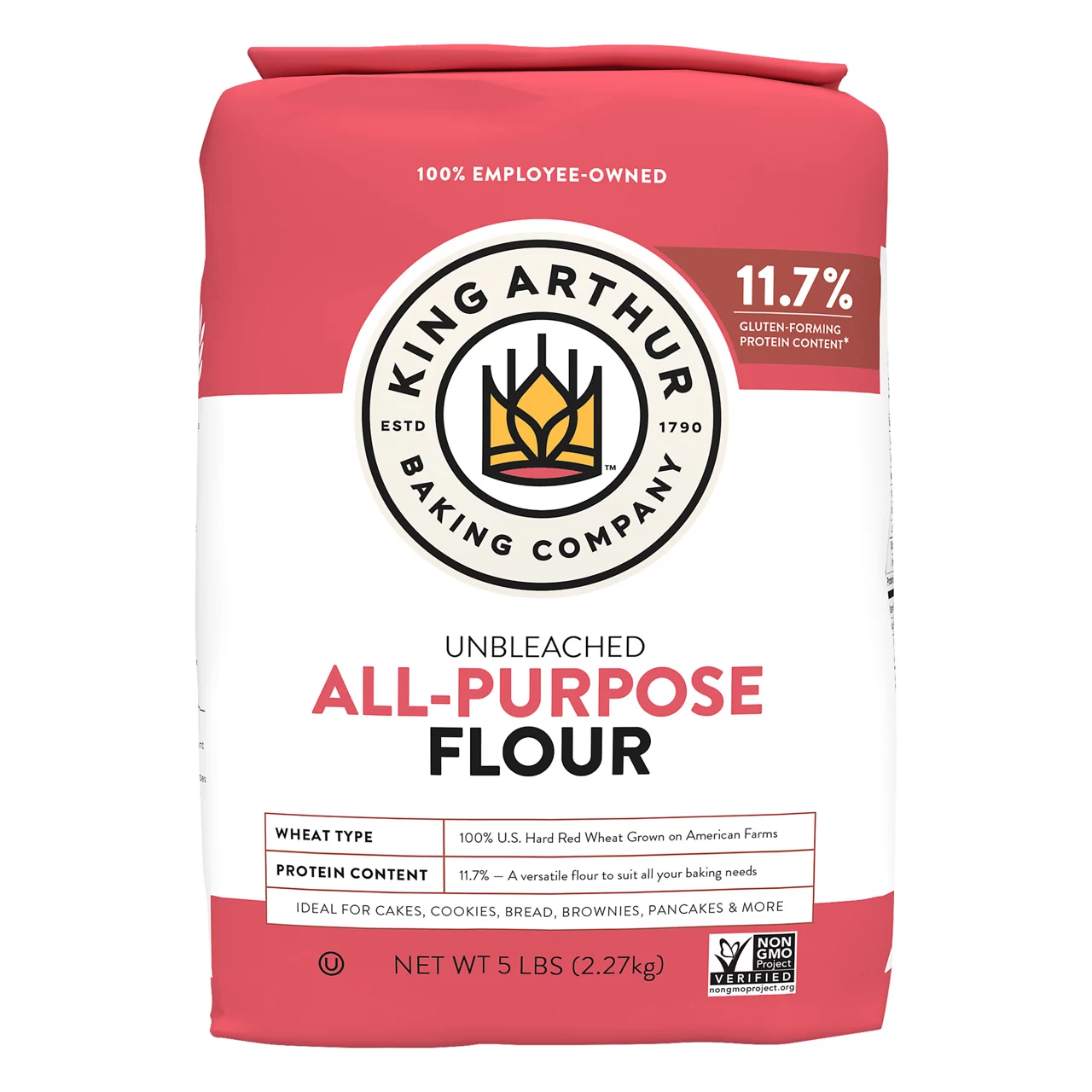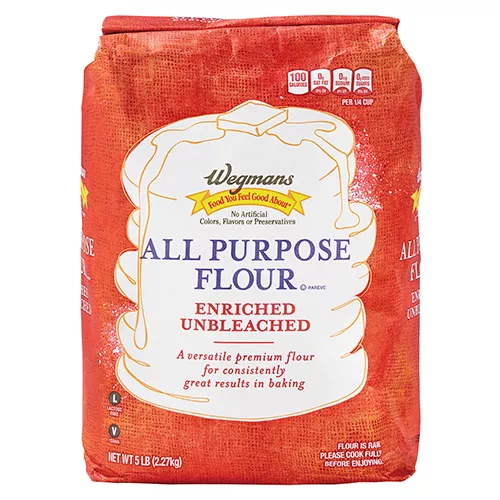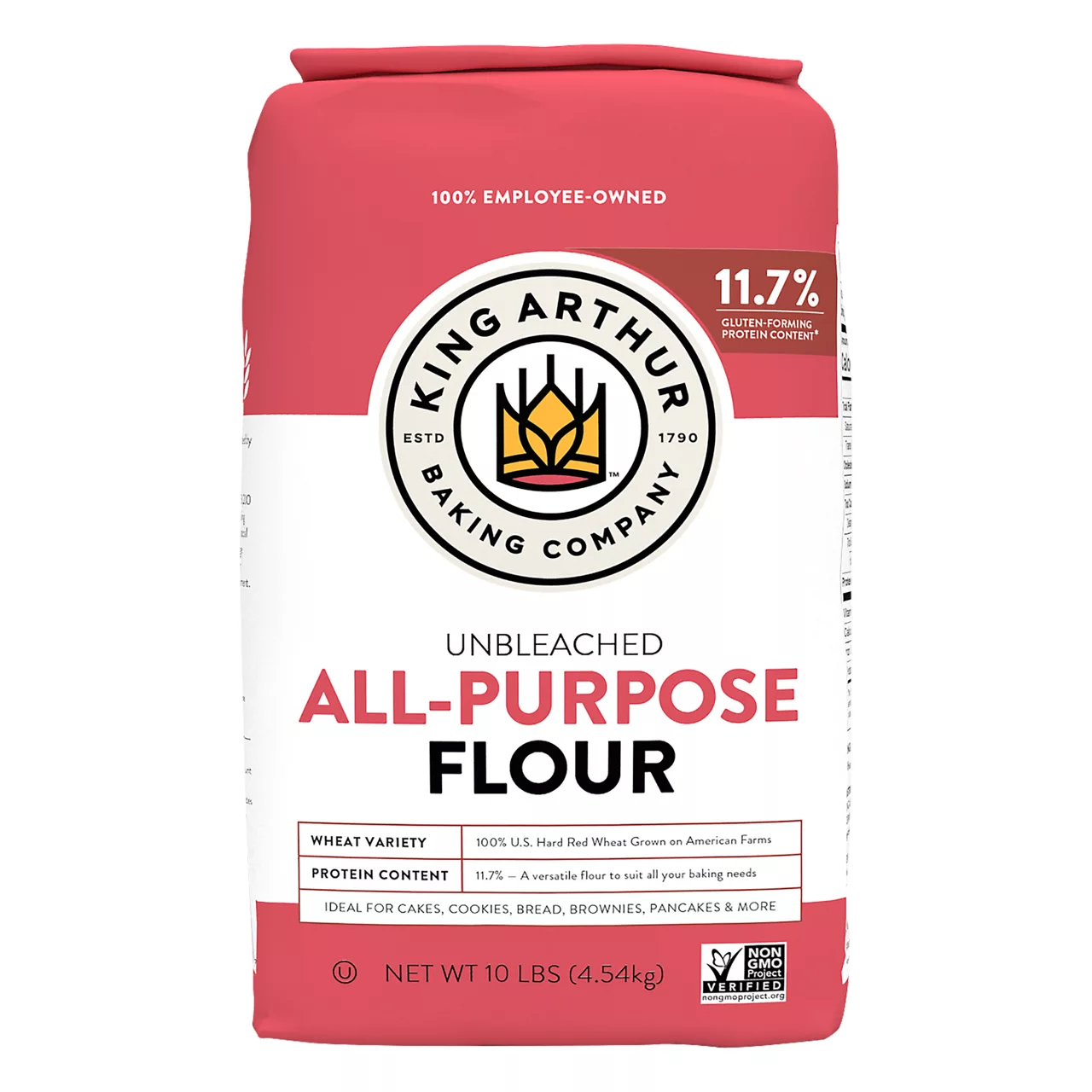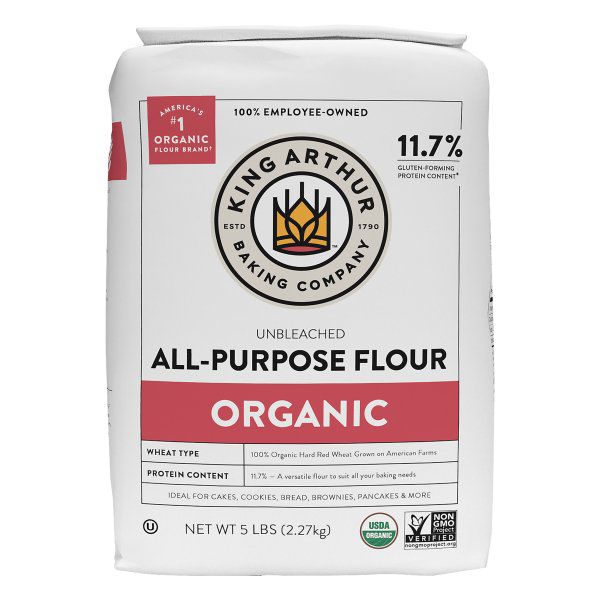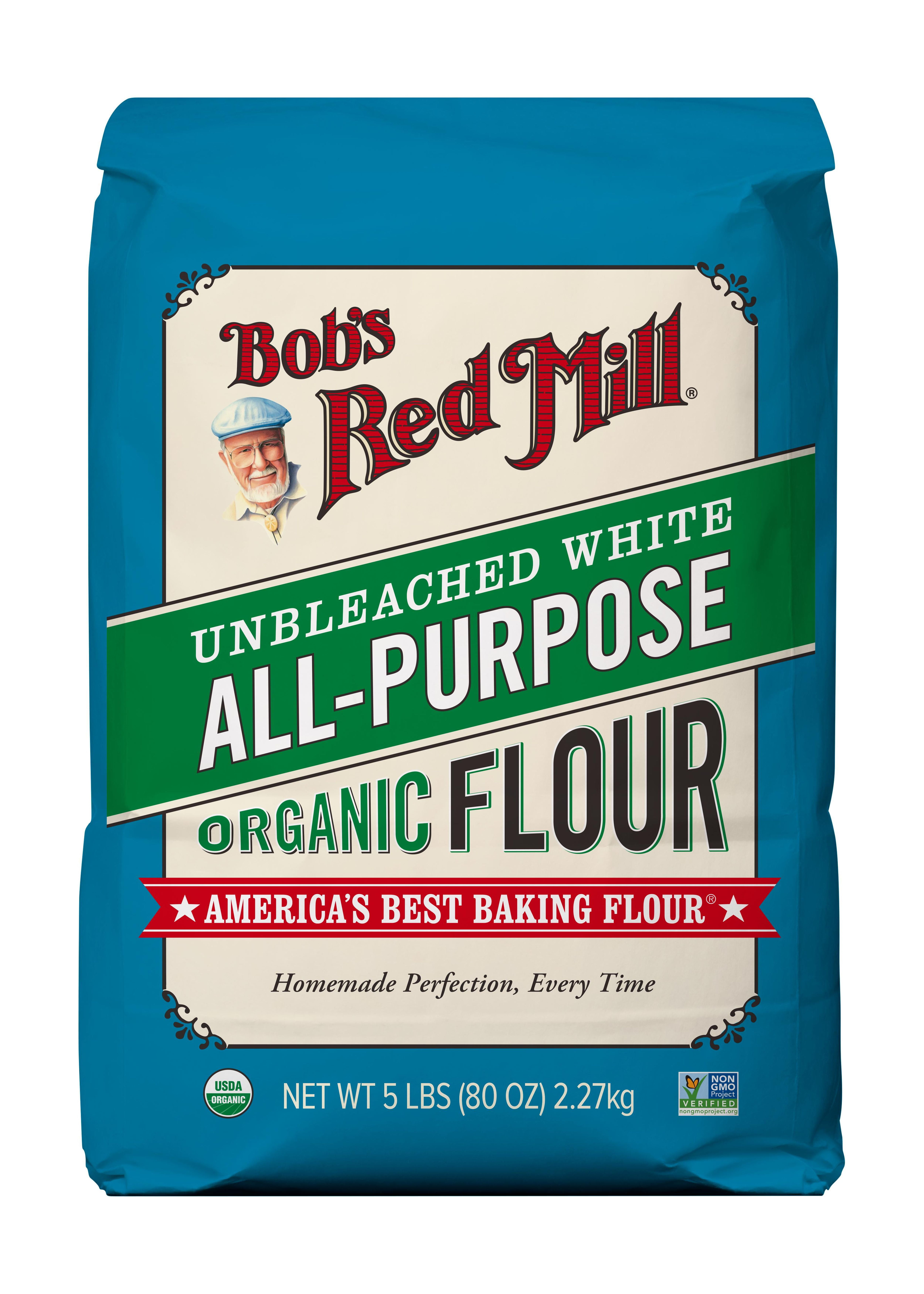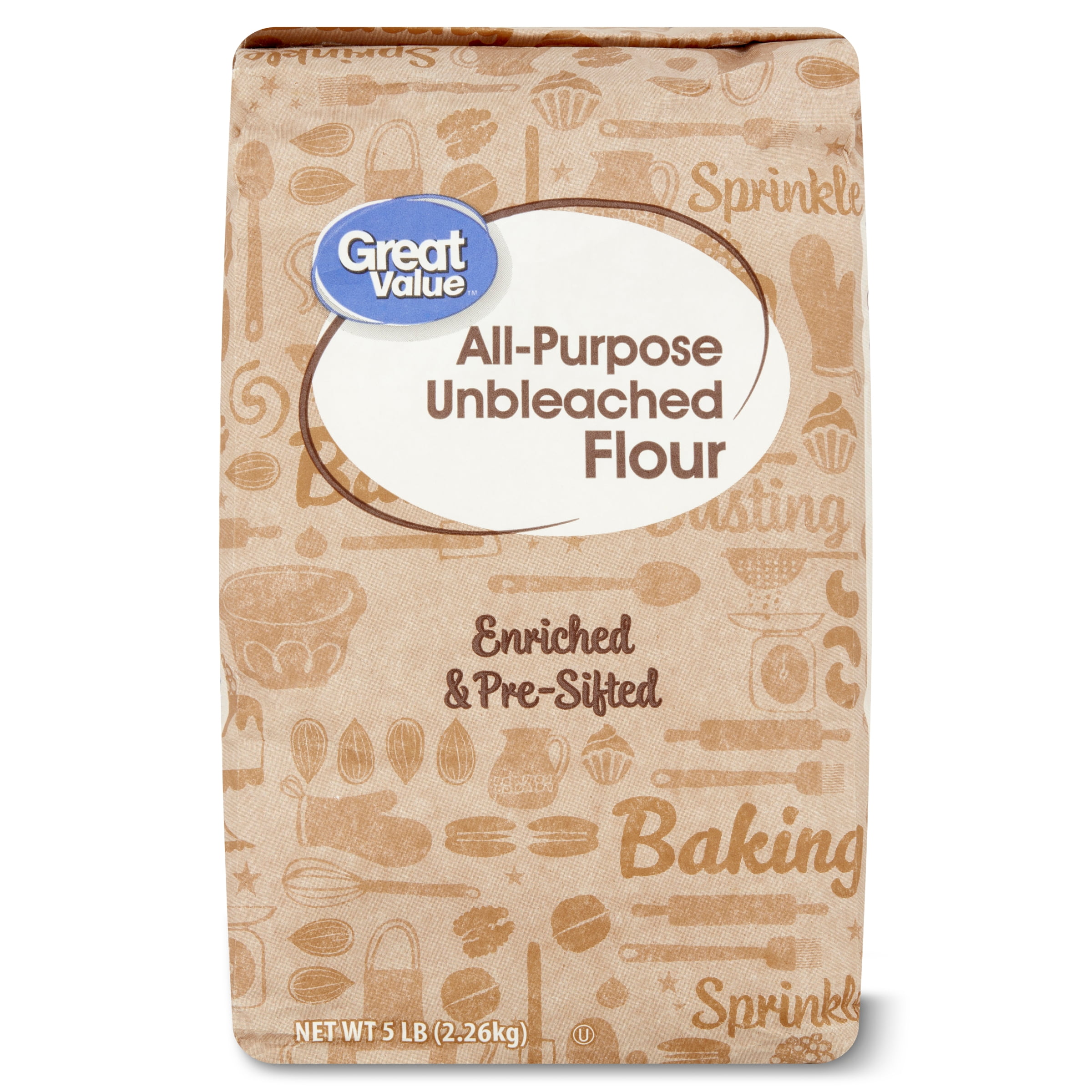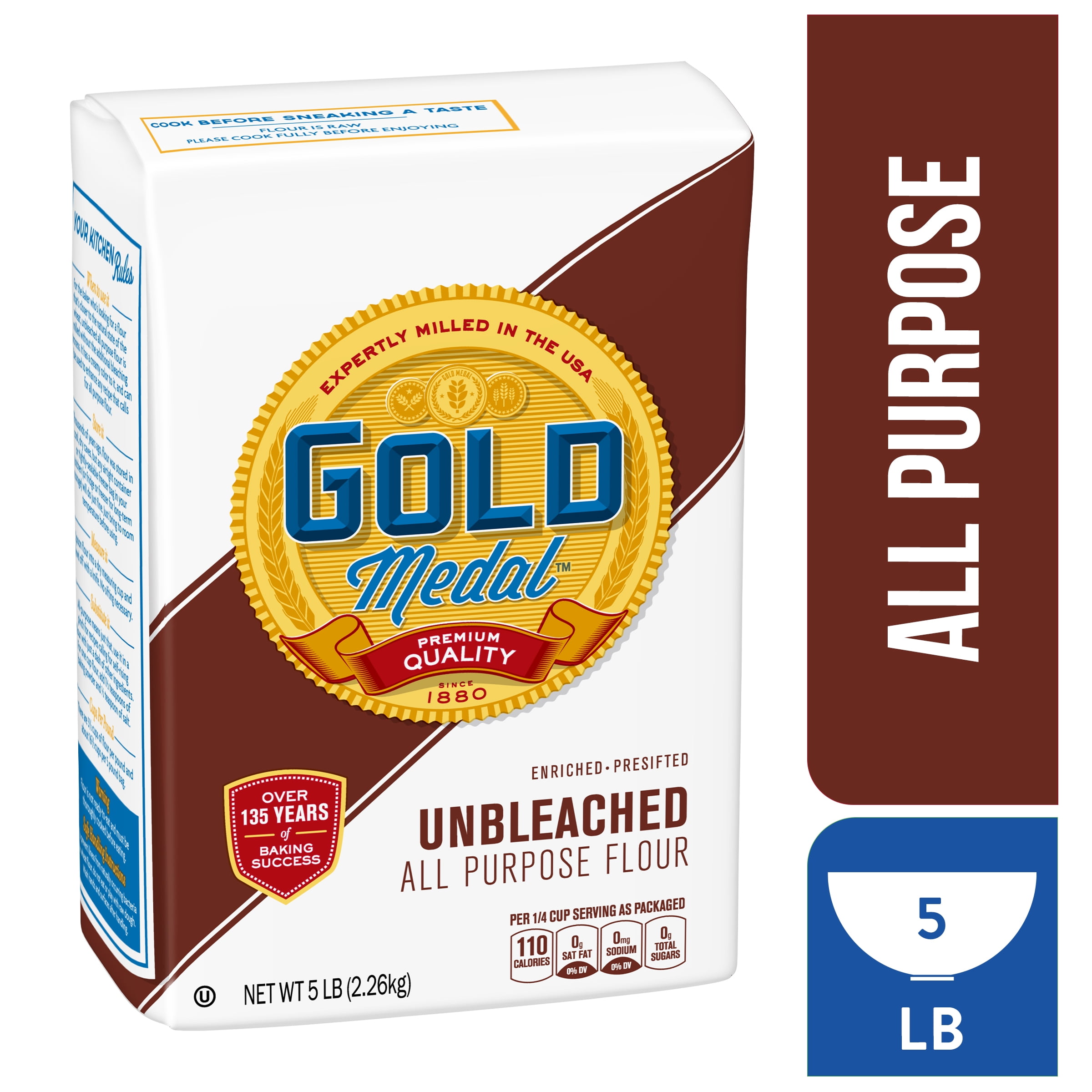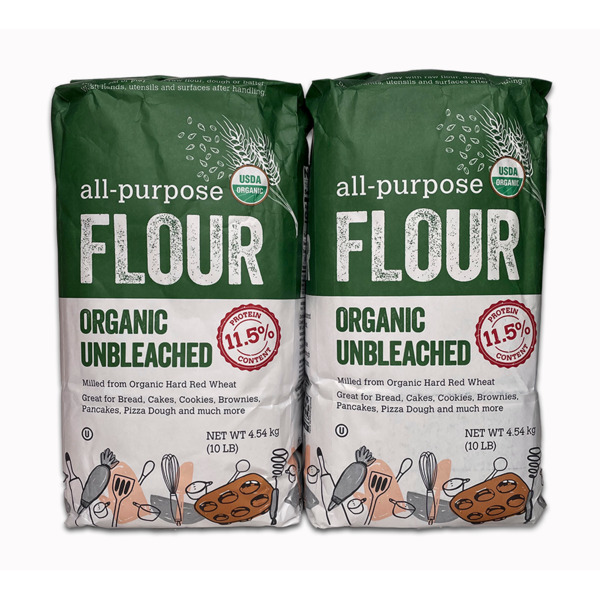BREADS
DESSERTS
BREAKFAST AND BRUNCH
Unbleached All Purpose Flour
Unbleached All Purpose flour is a type of flour that has not undergone the bleaching process commonly used in white flours to improve texture, color, and shelf life. It has a creamier color and a more natural flavor compared to its bleached counterpart. Due to the absence of bleaching agents, unbleached flour retains more of its original nutritional content, making it a better option for home cooks and health-conscious consumers.
In the kitchen, unbleached all purpose flour can be used interchangeably with bleached flour in most recipes, including bread, cakes, and pastries. However, some delicate baked goods may require slight adjustments to accommodate for the denser, coarser texture of unbleached flour. As a versatile and healthier option, unbleached flour is becoming increasingly popular for everyday cooking and baking.
87%
CARBS
1%
FAT
12%
PROTEIN
373 Unbleached All Purpose Flour Products
Wegmans Food You Feel Good About All Purpose Unbleached Flour
King Arthur Baking All-Purpose Flour, Unbleached
Wegmans Enriched Unbleached All Purpose Flour
King Arthur, All Purpose Unbleached Flour, Non-GMO Project Verified, Certified Kosher, No Preservatives, 10 Pounds
King Arthur Baking Company All-Purpose Flour, Organic, Unbleached
Bob's Red Mill All-Purpose Flour, Organic, Unbleached White
Great Value Enriched, Unbleached & Pre-sifted All-purpose Flour
Unbleached All Purpose Flour
Gold Medal Unbleached All Purpose Flour
Kirkland Signature Organic Unbleached All Purpose Flour
Used In 97 Recipes
Unbleached All Purpose Flour Is Frequently Used With
Unbleached All Purpose Flour FAQ
Unbleached flour is a type of wheat flour that has not undergone the bleaching process, making it more nutrient-rich compared to bleached flour. It can be used interchangeably with bleached flour for most recipes, but may require adjustments in some delicate baked goods due to its denser, coarser texture. While its color may seem less appealing, it provides more natural flavor and is a healthier choice for baking and cooking. Be mindful not to over-measure or compress the flour when baking, as its density can lead to heavy, less tender baked goods. Sifting can help aerate the flour for a lighter result. Also, if you're transitioning from bleached to unbleached flour, know that the latter absorbs liquid a bit slower, so you might need to adjust your recipes accordingly.
Unbleached flour is a favorite choice for those who prefer organic, minimally processed ingredients. It is perfect for bread, rolls, and any recipes that require strength and elasticity. As it doesn't have a bright white color like bleached flour, it might make your desserts a bit darker, but it provides them with a wonderful and richer flavor.
One little-known trick when using unbleached flour is to combine it with whole wheat flour in bread recipes. This can create a good balance between the natural taste and the texture of the bread.
Does the color of my baked goods change when I use unbleached flour?
Why are my cookies dense when I use unbleached flour?
Can I replace bleached flour with unbleached flour in a recipe?
Does unbleached flour have a different taste compared to bleached flour?
Do I need to sift unbleached flour before using it?
I've heard that unbleached flour is better for you than bleached flour. Is that true?
How do I measure unbleached flour correctly?
Can I use unbleached flour to make bread?
Why does unbleached flour absorb liquid slower?
Can I mix unbleached flour with other types of flour?
Expiration & Storage Tips
When does unbleached flour expire?
Unopened, unbleached flour can last for up to a year if stored in a cool, dry place. Once opened, it should be used within six to eight months for optimal freshness and quality. However, the actual expiration could vary based on storage conditions. For instance, if stored in an airtight container in the fridge, it can last up to two years, or even longer if frozen.
How do you tell if unbleached flour is bad?
One clear sign that your unbleached flour has gone bad is an off smell - a kind of musty or sour odor. Exposure to moisture can encourage mold growth which will have a notable smell. Additionally, you might see discolored spots, which is another clue of mold. Finally, if you notice bugs or their droppings, that's a sure sign the flour should not be used.
Tips for storing unbleached flour to extend shelf life
• Always keep the flour in an airtight container to keep out moisture and insects.
• Store the container in a cool, dark and dry place. The pantry is usually a good choice.
• For longer shelf life, you can store the flour in the refrigerator or freezer. Make sure it is well sealed to avoid absorbing other food odors.
• Use first in, first out method, that is use up the old flour before opening a new one to ensure freshness.
EXPIRES WITHIN
10 - 14
MONTHS
Equivalents
Substitutes

Pastry Flour

Unbleached Bread Flour

Unbleached Cake Flour

Unbleached Pastry Flour

Bread Flour

Cake Flour

Maida Flour
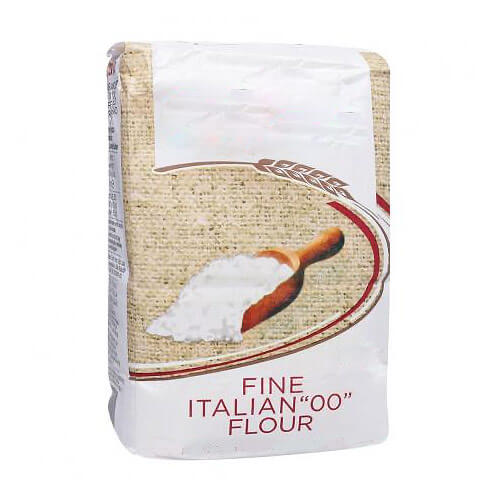
Tipo 00 Flour

Unbleached Self Rising Flour

Gluten Free Bread Flour
See All
Health Info
Macros
95g
CARBS
1g
FAT
12g
PROTEIN
Allowed on these diets
LOW FAT
HIGH CALCIUM
VEGETARIAN
VEGAN
LACTOSE FREE
Contains these allergens
WHEAT


